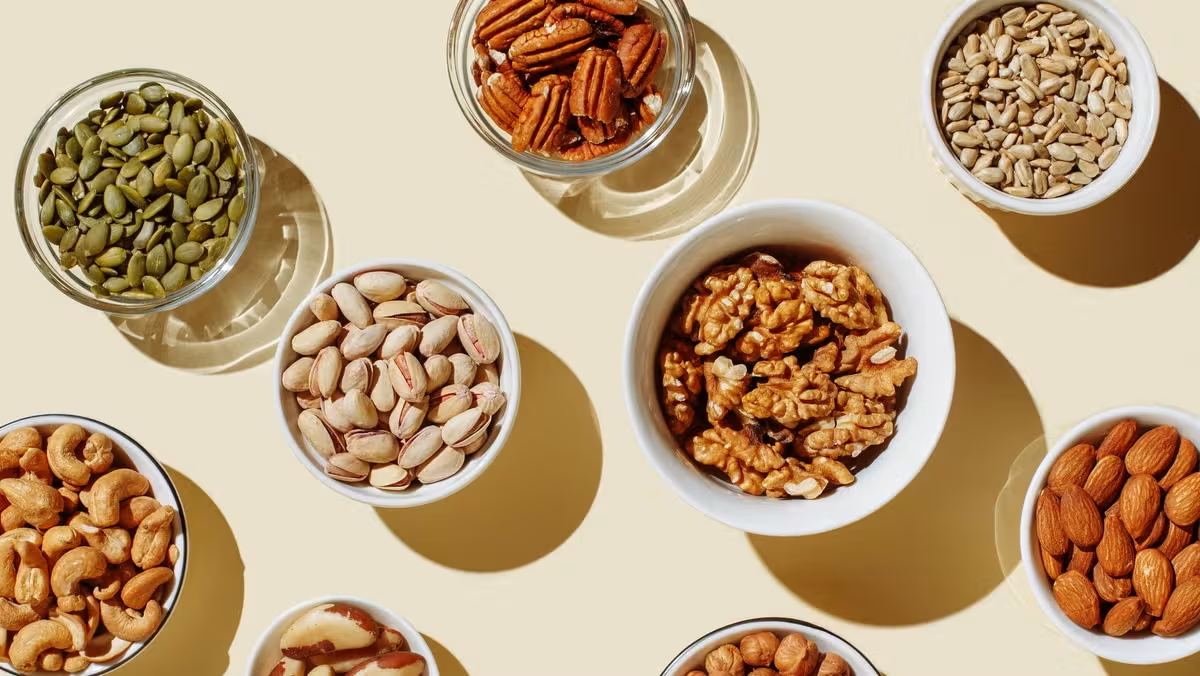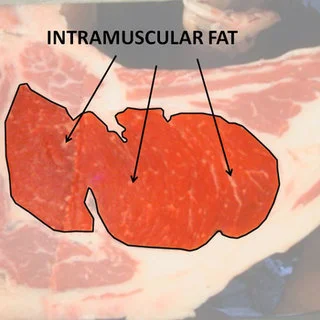10 High Protein Nuts for Weight Loss
For people who consume few or no animal products, nuts and seeds are adaptable, convenient to take on the go, and a decent source of plant-based protein.
Plant embryos are called seeds. Nuts are technically a kind of seed with a hard outer covering. All nuts are therefore seeds, but not all seeds are nuts.
However, the Food and Drug Administration (FDA) may categorize some seeds as nuts to help you recognize them as a potential allergy.
Nonetheless, if you are not allergic, you can consume nuts or seeds to satisfy your protein requirements. Building bones, muscles, and skin needs protein. Additionally, protein promotes sensations of fullness, which keeps you feeling content and invigorated.
While all nuts have protein, some have more protein as compared to others.
What Is the Highest Protein Nut?
A tasty and simple way to boost your protein intake is by eating nuts. However, they don’t all provide the same nutrients. Learn which has the most protein and how it may affect your health and ability to lose weight.
Nuts could be a good snack if you’re trying to reduce weight. Many nut species are flavourful, versatile, and high in protein, which offers several advantages. The in-house registered dietitian at Lose It!, Anna Smith, explains, “Research shows that [protein] keeps you satisfied and less likely to overeat, but it also helps preserve and even build muscle mass as you lose weight.”
But there is a wide difference in the nutritional worth of nuts, so some are a better option than others. Although peanuts rank best among nuts in terms of protein content, there are several alternative high-protein choices available. The best high-protein nuts to include in your diet, as recommended by our experts, are listed below.
Protein-Rich Nut List
The most well-liked high-protein nuts are listed here, arranged from highest to lowest protein content per serving.
- Peanuts
- Almonds
- Pistachios
- Cashews
- Pine Nuts
- Walnuts
- Brazil Nuts
- Hazelnuts
- Pecans
- Macadamia Nuts
PEANUTS
The legume family, which also contains beans, lentils, and soy, is where peanuts are classified despite their name. They are not related to tree nuts. One of the most popular nuts in the US is peanuts, which are produced underground as the fruit of the peanut plant. A great provider of magnesium, potassium, and phosphorus, peanuts are also high in protein, fat, and carbs. In addition to being used in savory recipes like stews and sweet ones like cookies, peanuts can be eaten raw, roasted, salted, unsalted, or as peanut butter.
Peanuts’ nutritional information for a 1-ounce portion of raw peanuts
- Protein: 6.58 grams
- Fat: 12.28 grams
- Carbohydrates: 7.51 grams
- Fiber: 2.27 grams
ALMONDS
Almonds are seeds that develop into the fruit of the almond tree, despite being called nuts. Although almonds are grown in a shell, most grocery shops sell them whole, sliced, slivered, raw, roasted, or salted. It is common practice to remove the shell before selling the almonds. Almonds are not only marketed as nuts but are also utilized to manufacture flour, oil, butter, milk, and almond paste. The skin is a wonderful source of antioxidants, while almonds are a good source of fiber and monounsaturated fats. Almond flour is a fantastic way to add protein and healthy fats to baked goods like muffins or pancakes, and whole almonds are excellent for high-protein snacking.
Nutritional Information for one serving of Whole, Raw Almonds
- Protein: 6.07 grams
- Fat: 14.49 grams
- Carbs: 5.67 grams
- Fiber: 3.06 grams
PISTACHIOS
A member of the cashew family, pistachios are somewhat green in color, have a slightly sweet flavor, and grow in trees. Pistachios are among the lowest-calorie and highest-protein nuts because of their much higher calorie-to-protein ratio when compared to most other nuts. Additionally, compared to other nuts, they provide a greater ratio of essential amino acids to protein, which are crucial nutrients for heart health. Pistachios are excellent for snacking, baking, and savory foods like salmon. They can be bought salted or unsalted, shelled or unshelled.
Nutritional Information for One Ounce of Raw Pistachio Nuts
- Protein: 5.81 grams
- Fat: 12.76 grams
- Carbs: 7.85 grams
- Fiber: 1.98 grams
CASHEWS
The seeds from the tropical cashew tree are called cashews, and they are an accessory to the cashew apple fruit. In addition to its fatty texture and rich, buttery flavor, cashews are a wonderful source of copper, magnesium, manganese, zinc, and unsaturated fats. In addition to being used to produce cashew milk and cashew butter, cashews can be purchased raw, roasted, salted, or unsalted. Trail mix, cereal, and salads like curried chicken salad all benefit greatly from the inclusion of cashews.
Cashew Nutrition Facts, per 1-ounce portion of raw cashews
- Protein: 4.93 grams
- Fat: 11.03 grams
- Carbs: 10.29 grams
- Fiber: 1.16 grams
PINE NUTS
Pine nuts are edible seeds derived from a variety of pine cone species, as the name suggests. These little white nuts have a high protein content and are also a good source of iron, magnesium, and omega-3 fatty acids. Pine nuts can be consumed either raw or roasted and are a healthy, high-protein snack. They can also be mixed into pesto sauce, added to salads, and used as a spread on sandwiches or pasta.
Pine Nut Nutrition Facts, per 1-ounce portion of uncooked pine nuts
- Protein: 4.45 grams
- Fat: 17.38 grams
- Carbs: 5.27 grams
- Fiber: 1.11 grams
WALNUTS
The seeds of a walnut tree, or genus Juglans, are derived from the fruit shell. Walnuts have a characteristic brain-like form and contain more omega-3 fats, notably alpha-linolenic acid (ALA), and fewer carbs than any other nut. Walnuts are supplied whole or in half pieces, and they have a mild, earthy, and somewhat acidic flavor. Chopped walnuts are a fantastic complement to baked goods like muffins and vegetarian recipes like lentil loaf or meatless pasta sauces because of their substantial texture and high protein level.
The nutritional value of one ounce of raw English walnut halves
- Protein: 4.14 grams
- Fat: 19.76 grams
- Carbs: 3.09 grams
- Fiber: 1.47 grams
BRAZIL NUTS
Because of their enormous, oblong shape, which makes them stick out in the bowl of mixed nuts, Brazil nuts are not only the largest but also among the richest in protein. Brazil nuts are hard-shelled, coconut-like fruits that are produced by rainforest trees. One Brazil nut has 175% of the daily requirement of selenium, making it an important source of minerals along with protein and good fats. For a sweet and savory office snack that is high in protein, good fats, carbs, and minerals, combine Brazil nuts with dried fruit.
Brazil Nuts’ nutritional facts for one ounce of dry, unblanched Brazil nuts
- Protein: 4.05 grams
- Fat: 19.02 grams
- Carbs: 3.32 grams
- Fiber: 2.13 grams
HAZELNUTS
Filberts, another name for hazelnuts, are the fruit of the hazeltree and are characterized by their spherical form. Rich and crunchy, hazelnuts are frequently combined with chocolate or cocoa powder to create desserts or sweet spreads like Nutella. Aside from being a rich source of protein, hazelnuts are also a fantastic source of antioxidants including omega-3 fats and vitamin E.
The nutritional value of one ounce of raw hazelnuts or filberts
- Protein: 3.83 grams
- Fat: 15.17 grams
- Carbs: 7.51 grams
- Fiber: 2.38 grams
PECANS
Nuts from hickory trees that are indigenous to northern Mexico and the southern United States are called pecans. These high-fat nuts provide a moderate amount of protein and are rich in calories. Pecans are also an excellent source of monounsaturated fatty acids, antioxidants like vitamin A, and minerals like copper, thiamine, and zinc. Pecans make a great snack or addition to baked products like baked oats and granola.
Pecan Nutrition Facts, per 1-ounce portion of uncooked pecan halves
- Protein: 2.82 grams
- Fat: 20.78 grams
- Carbs: 3.60 grams
- Fiber: 1.64 grams
MACADAMIA NUTS
Macadamia nuts do contain some protein, however, they are the nut with the least amount. Native to Australia, macadamia nuts are mainly a good source of fiber, healthy fats, and carbs. Manganese can also be found there. In addition to being marketed raw and shelled, macadamia nuts are used to manufacture macadamia nut milk, a well-liked but expensive non-dairy milk substitute.
Per 1-ounce portion of raw macadamia nuts, the nutritional facts
- Protein: 2.21 grams
- Fat: 18.40 grams
- Carbs: 6.83 grams
- Fiber: 2.15 grams
Summary
Some nuts provide more protein than other plant meals, even though they are mostly a source of fat and carbs. When it comes to nuts and seeds that are high in protein, peanuts, almonds, and pistachios are the best options.
FAQs
Which nuts have all the proteins?
Generally speaking, foods that are high in all nine essential amino acids are categorized as complete protein sources. A full protein is found in pistachio nuts. Hemp and chia seeds are two other seeds that provide full proteins.
Compared to an egg, which three nuts are higher in protein?
About 6 g of protein may be found in one big egg (50 g). Reliable Source In contrast, every nut or seed on this list will provide more than 6 g of protein in 50 grams.
Which nut contains the most protein?
Peanuts have the highest protein content of any nut, containing 6.58 grams per 1-ounce meal. Almonds and pistachios, which provide 6.07 and 5.81 grams of protein per 1-ounce meal, respectively, are the next closest foods to peanuts.
Which nuts are low in calories and high in protein?
Compared to other nuts, peanuts, almonds, and pistachios have the highest protein-to-calorie ratio because they have more protein and fewer calories from fat and carbs.
How much is a serving of nuts?
One ounce (28 grams) of nuts, or about one small cupped handful, is the suggested serving size.
References
- Ajmera, R. (n.d.). Which Nut Is the Highest in Protein? LoseIt.com. https://www.loseit.com/articles/which-nut-is-the-highest-in-protein/
- Ld, L. S. M. R. (2024, October 21). 9 High Protein Nuts and Seeds to Eat. Healthline. https://www.healthline.com/nutrition/high-protein-nuts#faq
- Kay, S. (2024, July 1). 10 High-Protein Nuts. Stephanie Kay Nutrition. https://kaynutrition.com/high-protein-nuts/



